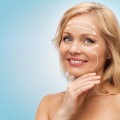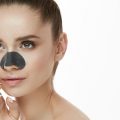Dry, flaky skin adds to the aging factor. Hydrated and moisturized skin keeps your skin rejuvenated and healthy. People with naturally dry skin need to keep their skin moisturized almost daily to avoid developing any flaky texture. Your skin produces oils to maintain the moisture barrier of your face so that your skin does not become susceptible to inflammation and damage.
A good lifestyle includes taking good care of your skin, and the best way to include a skincare routine in your lifestyle is by adopting the most natural and healthiest skincare practices to moisturize your skin. Healthy skin will make you appear younger and give you a natural glow that will boost your self-confidence.
Sun Protection
Though sitting in the sun for long may appear harmless, it can do more damage than good. It can leave you with a sunburn and ultimately harm your skin. In addition, prolonged exposure to the sun can cause your skin to look dry, wrinkled, leathery, and discolored. However, if these are still not enough reasons for you to stay away from the sun, perhaps skin cancer is. One of the major causes of skin cancer is long-term sun exposure.
Though many are taught that the sun is a great source of vitamin D, it is not exactly true. These days, foods are fortified with vitamin D. Many other food sources are rich in vitamin D and can be used for your daily recommended amount. Sun can cause much damage to your skin as it also aids in premature aging of the skin.
To avoid skin damage from the sun, you can follow certain precautions like:
Wear Sunscreen
Applying sunscreen to your skin should be an everyday habit and should be reapplied within the span of every two hours. Different sunscreens have different SPF levels that block the harmful UV rays from penetrating your skin. Sunscreens with SPF below 15 are not very beneficial, and above SPF 50 are basically useless. Therefore, sunscreens with the range of SPF 15-30 are the most ideal.
Avoid the Sun
Skin specialists can’t stress enough the significance of sunscreens. A study showed that children up to the age of 18 who wore sunscreen regularly were 76% less likely to get skin cancer. Sunlight should especially be avoided during the times when the UV rays are at their strongest. This time normally occurs between 10 am to 4 pm. So you should always keep an eye out for shade if you happen to be outside.
Wear Protective Clothing
Cover yourself with long pants, tightly woven shirts with long sleeves, and a wide-brimmed hat. Laundry additives also add to the layering of UV rays that may cause great damage to your skin.
What Ingredients Moisturize Your Skin
Moisturizers are made up of certain ingredients that act as a seal for the top layer of the skin. They seal in all the water and help maintain moisture within the skin. Layering your skin with moisturizers is the best way to moisturize skin.
Here are the main ingredients that make up a moisturizer.
Humectants
Humectants are hygroscopic substances that help keep things moist. They attract moisture and ultimately are highly beneficial to the skin barrier. They include ceramides, sorbitol, glycerin, lecithin, and hyaluronic acid.
Occlusives
Occlusives are another moisturizing agent that works by layering at the top of the skin barrier to prevent any moisture from escaping through. They can be applied after applying toners and serums to help your skin absorb the benefits of the products. Examples of occlusives are silicone, petroleum jelly, lanolin, and different oils.
Emollients
Emollients are one of the major ingredients in a moisturizer. They help soften and hydrate the skin to reduce the flaky texture and decrease itching. These substances are much lighter than petroleum oils or jelly. They contain emulsifiers, water, and oil to keep them from separating.
The ratio of the ingredients may differ depending on the type of moisturizer you are using. Moisturizers come in a range of different ingredients depending on what skin type they are most suitable for. People with extremely dry skin are usually recommended to use thick moisturizers to help them seal the moisture inside their skin. Meanwhile, people with mixed skin (of dry and oily skin) are usually recommended to use lightweight moisturizers.
Natural Ways To Moisturize Your Skin
Here are a few tips on how you can moisturize your skin when you don’t want to spend on the costly moisturizers and still not strip your skin of its natural moisture. You need to make these practices routine before you start noticing that your skin is no longer dry and flaky.
Use a humidifier in winter. Climate plays a major role in the drying of your skin. There is little to no moisture in the air, which prevents your skin from being hydrated. You can set the humidifier at 60%, which is fine to rejuvinate the top layer of the skin.
Bathing too much is another factor that contributes to dry skin. Limiting your bathing time to 5-10 minutes daily is perfect for keeping your skin moisturized. Other than this, you should use warm water instead of hot water. Hot water strips your skin of the natural oils that act as a moisturizing agent to your skin.
Avoid using harsh soaps, and instead switch to soap-free cleansers like Oilatum-AD, Cetaphil, and Aquanil. Bar soaps are especially stripping. However, if you must use them, consider Dove, Olay, or Basis. It would be best if you used them as minimal as possible. Products with fragrances and alcohol also pose red flags when it comes to skin moisturizing.
Conclusion
There are hundreds of over-the-counter treatments you can use to prevent yourself from having dry skin, but they are not usually the best ways to get your skin moisturized. Habits like frequently exfoliating or using harsh soaps can strip your skin of the already present moisture and cause significant damage to your skin. Therefore, taking good care of your skin to keep it moisturized, young, and healthy should always be your priority.





